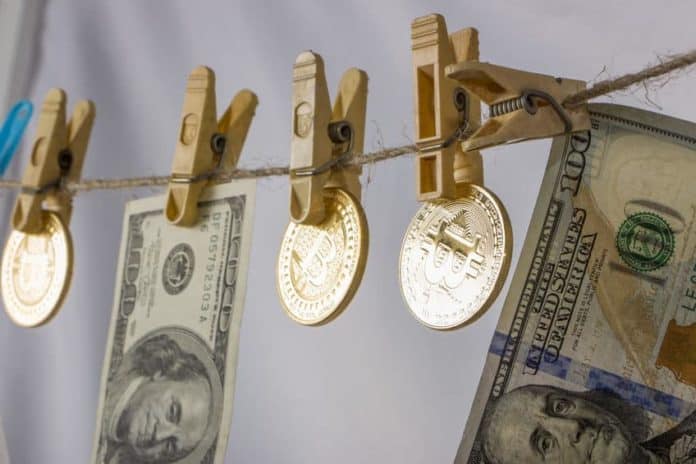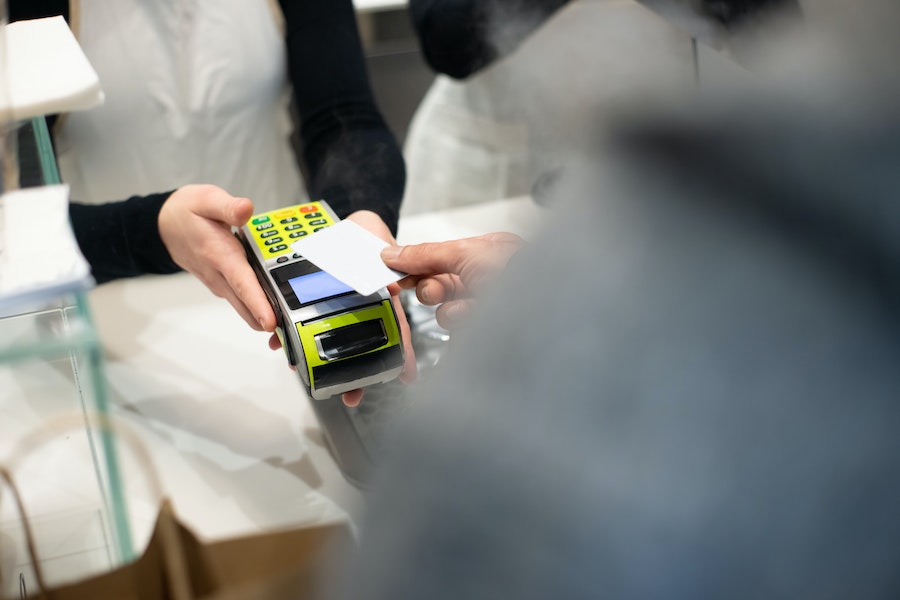Money laundering is a serious criminal process that is used to fund and shield some of the most violent and destabilizing enterprises around the world.
Regulators, managers and whistleblowers alike must understand how to spot money laundering as well as the heavy risks that it poses to both small and global financial institutions. The following guide covers these schemes, how they work and the laws and initiatives that have been put in place to combat them.
Table of Contents
- What is Money Laundering?
- How Money Laundering Schemes Work
- Examples of Money Laundering
- Why is Money Laundering Illegal?
- Famous Money Laundering Cases
- Anti-Money Laundering Initiatives
- Laws Against Money Laundering
- Money Laundering Statistics
- Bottom Line
What is Money Laundering?
Money laundering is the process of making money earned from criminal activity appear to have a legitimate source. It’s a multi-stage process where the money is accumulated, separated from its original source, mixed with legitimately-earned funds and then funneled back to its original source.
Why is Money Laundering a Part of Criminal Activity?
Money laundering is essential to the operation of any criminal activity that is long-term and lucrative. Most criminal transactions are handled in cash because only cash payments are assured to be untraceable at the point of sale. However, cash can quickly accumulate to the point that it becomes a liability.
For most criminal enterprises, the only alternative to money laundering is to maintain large supplies of physical cash and move it in amounts too small to attract attention. This leaves those involved at constant risk of having physical stockpiles of cash discovered and seized.
Even before the days of electronic monitoring, it was difficult to move large sums without attracting attention from law enforcement and tax authorities. In recent years, data analytics and machine learning have made the task of identifying illicit money even easier.
For many criminals, masking the money so that it appears legitimate is the only way to deal with large sums for a long time.

What Criminal Activities are Linked to Money Laundering?
Nearly any crime that involves large amounts of money will depend on money laundering to make it possible to spend the proceeds. Research shows that some of the crimes most commonly correlated with money laundering include…
- General Fraud
- Narcotics Trafficking
- Theft & Embezzlement
- Tax & Customs Violation
- Cybercrime
These crimes account for hundreds of billions in losses to countries around the world. The developing world alone is believed to lose close to 1 trillion dollars every year in money that is generated from criminal activity and then funneled out of the country in laundering schemes.
The Institutions Used for Money Laundering
While money laundering schemes can operate in many different ways, most of the largest schemes depend on only a few types of institutions around the globe.
Major Financial Firms: The largest banks are often also the homes of the largest-scale money laundering schemes. While nearly all banks around the world are obligated to observe reporting requirements now, the number of transactions that large banks process can make it easier for illicit activities to pass through without notice.
That is not to say that small banks aren’t at any risk. Small banks are often targeted for a certain technique that will be discussed in more detail later, where proxies make deposits on behalf of someone else.
Casinos: There are very few ways that someone can turn a small amount of money into a massive amount of money without attracting attention from law enforcement. Gambling, however, is one of the ways that someone can do that. For that reason, a lot of illicit money is used for gambling and then comes out the other side as legitimate “winnings”.
Naturally, this strategy comes with some risks to the launderer. However, if the money shouldn’t exist at all, any portion of it that can be extracted successfully is acceptable.
Tax Havens: Though they are fewer in number than they were in the past, places where banks are permitted more secrecy have a role to play at every stage of money laundering. Money can be hidden there until laundering schemes are ready, distributed to other locations more quietly or blended in with the local economy of the tax haven. Tax havens have also been a favorite of wealthy individuals for tax evasion purposes.
How Money Laundering Schemes Work
Money laundering schemes vary wildly in complexity and order of operations, but there are three cycling goals that must be achieved for any scheme to be successful: Placement, layering, and integration.
The figure below is an example of how those goals play into one another and form a continuous cycle until the illicit money until the complete amount has been laundered.
The Three Stages in Detail
While the image above covers the big picture, those who want to spot money laundering will need to understand the role of each stage, as well as how they may function in different ways depending on the scheme.
Placement
Placement is the stage where the money first enters the financial system. In this step, it may be deposited in a bank, added to the accounts of an existing business or disguised as a transaction (for example, for products that are never provided).
Placement is often achieved through a series of regular small transactions. Criminals who make the mistake of depositing large amounts of unaccountable cash are often quickly caught. No matter the scheme, the placement
Of course, many people who attempt money laundering schemes have no past experience and don’t know what behavior is likely to be flagged. This step is widely considered to be the riskiest. If the deposits are scrutinized at this stage, none of the justifications that will exist later in the scheme will yet be in place.
Layering
Layering is the stage where the illicit money is blended with legitimate money or placed in constant motion. Layering often involves generating so many different transactions that the laundered cash disappears into them. Illicit money can be used to gamble, then placed into stocks, then shuffled around in different currencies and then used to buy financial products like life insurance policies.
Layering can work in dramatically different ways depending on the scheme. In all schemes, however, the purpose of the layering stage is to make it difficult for even a skilled accountant to differentiate between money that came from legal transactions and money that came from funds that were placed for laundering.
While layering is typically a safer stage than placement, those who are not often can still be caught easily if they make mistakes. For example, if a business that averaged $5,000 in transactions a day for years were to suddenly start processing $10,000 in transactions a day, it might attract scrutiny.
Integration
Integration is the stage where the money re-enters the legitimate economy. When the money appears to come from legal businesses or investments, or the trail has become to difficult to follow, the money can then be placed into larger-scale investments.
Integrated cash is often placed into luxury assets, properties, long-term investments, and new businesses. Integrated cash may be used to purchase assets that can be used to facilitate future money laundering more safely.
Examples of Money Laundering
There are several common types of money laundering, including casino schemes, cash business schemes, smurfing schemes, and foreign investment/round-tripping schemes.
A complete money laundering operation will often involve several of them as the money is moved around to avoid detection. For example, proceeds from cash businesses can be gambled, just as the “success” of a cash business that has been infused with placed cash can be used to justify investments or loans that, in fact, come from cash placed offshore.
Each of the examples below includes how the money behaves during the placement, layering and integration stage.
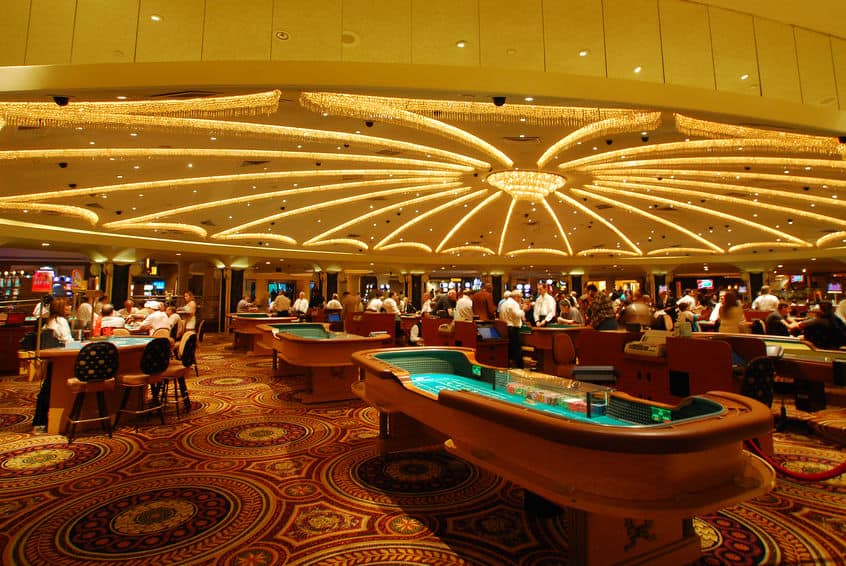
The Casino Scheme
The casino scheme works by funneling the money through gaming. The money is converted to casino chips, which are then briefly played and then transferred back into cash. The chips may be converted by the launderer or by a proxy.
In many cases, the casino where the money is being laundered is in a different nation than the launderer’s nation of origin. This makes it difficult for law enforcement in either country to gather evidence that might reveal proof of money laundering.
Placement: The placement stage occurs when the money is delivered to the proxy who will take payment in cash and then exchange it into chips. In some countries, travel agencies provide casino chips as part of their packages. Paying for these packages in cash can be an effective way to place the cash without electronic records.
Layering: When the money is laundered through gambling, the layering stage takes place when the cash (or chips purchased through an intermediary) is carried into the casino and used for gambling. In most cases, very few of the chips are used for gambling because of the risk of loss. Instead, the chips are lightly used for several hours and then converted back into cash.
The receipts from the cashout are used as evidence of the cash’s legitimacy. There is no record of how many chips were carried into the casino, so the launderer can plausibly claim that small amounts were carried in and the larger sum comes from winnings.
Integration: Money laundered through casinos is relatively easy to integrate. Once the winnings have been reported and any taxes have been paid, the money can be used for any other purposes.
The Cash Business Scheme
The cash business scheme is one of the most classic schemes for laundering large amounts of physical cash. Even today, there are many businesses who handle most of their transactions in cash. Illicit cash can be inserted into these transactions at a fast or slow pace.
Laundering money through cash-intensive businesses was the preferred method of the famous gangster Al Capone. He evaded investigators for years by funneling the money his crimes generated through his small empire of laundromats. The term “money laundering” was coined by the agents investigating him.
Placement: Placement for a cash-intensive business scheme involves direct cash payments to the owner or manager of the establishment. The money to be laundered for the day is brought to the premises of the business. It stays in a safe location until it can be added to profits for the day through one of several methods.
Layering: When the money is laundered through cash businesses, such as car washes and strip clubs, the layering stage takes place when dozens of fake transactions are slipped into the books throughout the day. These transactions may take the form of fake customers, or through extra services tacked onto legitimate transactions, with the difference added from the placed money.
Integration: Cash-intensive business schemes often extract the money through daily profits. This scheme requires the money to be laundered somewhat slowly, but some amount is ready every day, making it more liquid for the launderer. Taxes are paid on the reported profits, and the money can now be used to any purpose.
The Smurfing/Structuring Scheme
Smurfing refers to the practice of distributing small amounts of a larger cash horde to a series of partners who then deposit the money in incremental amounts. Smurfing is used to get around the currency reporting requirements that banks are required to observe in many countries. Small amounts that come from many partners are less likely to trigger an automatic report
Placement: The placement stage starts with the cash being distributed through a network of people who can be trusted to deposit the money back again on schedule. Larger criminal organizations are more likely to use this strategy because they already possess a network of compliant members.
Layering: The layering stage for this type of scheme happens as the money is deposited back into one or several accounts. More advanced smurfing schemes will attempt to ensure that the money is deposited in ways that avoid automatic detection. The cash must not only be deposited in small amounts, but in varying amounts and at different intervals.
Integration: The money can be extracted as it is moved back into the account. While this scheme avoids automatic detection and reporting, it is not as safe as some schemes. If the deposits do come under scrutiny, it may be difficult for the launderer to explain why the deposits were made.
The Foreign Investment Scheme
Many countries are allowed and encouraged to invest in US businesses. However, the IRS has little power to account for how the money used in these investments was accumulated. In some cases, the money comes from illicit activities. The launderer delivers the cash to the foreign investor, who then returns it by making an investment into the launderer’s own business.
Placement: Placement occurs when the cash is delivered to the foreign partner. In most successful schemes, the launderer will not appear to have any prior contact with the investor who is holding the money. For all intents and purposes, the money appears to be the property of the foreign partner.
Layering: When the money is laundered through foreign investment, the layering stage takes place when the foreign business “invests” into the legitimate business using money that was placed with them. These amounts are usually larger than in other schemes, but difficult to prove illegitimate.
Integration: The money in this scheme can be more difficult to extract, despite the fact that large amounts can be moved. Investments into a business must be credibly used within that business. The money can be extracted from the profits that the investment generates, or from high executive salaries funded by the investment.
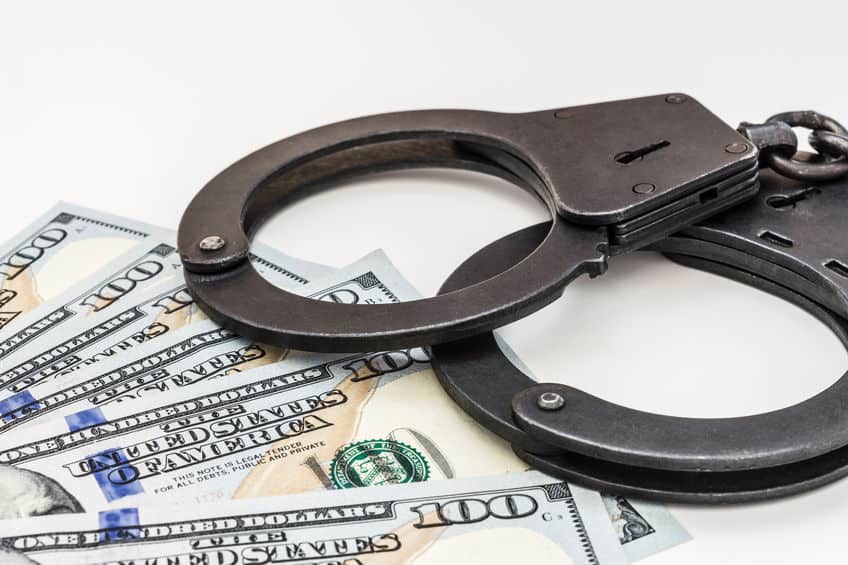
Why is Money Laundering Illegal?
Even though the money used in money laundering is often associated with other crimes, money laundering is illegal on its own without any evidence that the money was illicit. Many nations have made money laundering a crime because of the relationship laundering has with nearly every other type of lucrative crime.
Nations that do not outlaw and pursue money laundering are at risk of becoming international hotspots for laundering schemes. This can lead to decreased public safety as more criminals begin operating in the area. There may also be diplomatic consequences as law enforcement organizations identify the nation as a money laundering hotspot.
Famous Money Laundering Cases
While money laundering is better understood and more easily detected than ever before, it is by no means a crime of the past. Many of the largest laundering schemes ever prosecuted took place within only the last few years.
HSBC Holdings PLC
In 2012, HSBC was one of the largest banks in Europe and an important part of one of the largest money-laundering schemes of the century. While bank leaders were not directly implicated in facilitating the scheme, it was discovered that the bank’s lax security and reporting policies allowed for massive amounts of money to move without detection.
All together, HSBC networks were used to launder nearly $900 million dollars for the Sinaloa cartel and other criminal organizations. Much of this money was believed to have come from drug trafficking enterprises.
Though adequate monitoring systems for money laundering are required by law, none of the executives of the bank were charged over the lax security measures. However, the bank was ordered to pay nearly $2 billion dollars in fines to the US and to submit to a series of restructuring requirements.
Danske Bank
The Danish Danske Bank scandal is one of the most recent major money laundering cases and perhaps one of the biggest in world history. More than $200 Billion in suspicious transactions moved through the bank between the years of 2007 and 2015. Most of these transactions were processed through the bank’s Estonian branch and were initiated from Russians and Azerbaijani sources.
Leaders of the bank faced charges in several countries. The CEO was charged in Denmark, and several former employees were arrested by Estonian law enforcement to face charges. As of 2019, the bank’s employees continue to be charged.
The bank itself is facing billions in fines from the regulators of several of the nations involved. Denmark and other European nations have already moved toward fines. As of this time, the US financial investigation is still ongoing, with both the Department of Justice and the Securities and Exchange Commission examining the transactions.
Wachovia
Wachovia was one of the largest banks in the US when a massive money laundering investigation into it began in 2005. Agents with the Drug Enforcement Agency noted numerous connections between the bank and narcotics traffickers that they were investigating at the time. This investigation would ultimately reveal that the bank was used to launder nearly $300 million.
The money involved in the laundering was deposited into accounts in Mexico by money exchangers and then wired to US accounts where it was withdrawn and then shipped back to Mexico in US cash. The accounts were not given much scrutiny in either country, which allowed the schemes to continue for years on end without raising flags.
Wachovia was found to be negligent in the ensuing investigation, and ultimately ordered to pay more than $123 million in fines. The bank was also ordered to undergo a major restructuring. The bank, suffering from several internal and external problems, was sold to Wells Fargo several years later.
Anti-Money Laundering Initiatives
The scope and seriousness of money laundering throughout the world has inspired several major initiatives, including intergovernmental organizations with a global reach. These initiatives take on the role of recommending more effective laws to member states, encouraging compliance with international agreements and shining a spotlight on abuses.
Financial Action Task Force on Money Laundering (FATF)
The FATF is one of the premier intergovernmental organizations that is directly concerned with the issue of money laundering, and more recently, the financing of terror throughout the world. The organization is a result of a combined effort by the G7 (Canada, France, Germany, Italy, Japan, UK and US) to improve and standardize anti money-laundering laws.
In 1990, the organization published a set of 40 recommendations that are widely considered to set the global standard for effective reforms. The recommendations covered changes countries could make to their laws, enforcement mechanisms and investigative practices to prevent money laundering within their own borders.
In addition to encouraging greater cooperation among member nations, the organization serves to place an uncomfortable spotlight on nations that are flaunting international standards.
The FATF publishes a regularly-updated blacklist of the countries that are believed to be facilitating global money laundering. Countries are added to this list when there is evidence that they are hindering the enforcement of money laundering laws by providing safe havens for launderers and institutions than enable them.
In the past, countries placed on this list—and businesses headquartered in them—have faced intense financial pressure. Despite the fact that the list has no legal force on its own, it has been proven to be a powerful coercive force for reforms.
The organization has also grown far beyond its original membership. Thirty-six countries are members now, and a large number of international banks and organizations have declared themselves to be observers of the FATFs mission.
International Money-Laundering Information Network (IMoLIN)
IMoLIN is an anti money laundering research resource that is operated by the United Nations. This network was developed to provide support to policy practitioners, lawyers and law enforcement officers who need are working to improve the detection, identification and prosecution of money laundering.
The organization primarily focuses on developing useful information, statistics and case studies. This research material can be used by established and developing nations to determine the most effective reform measures against money laundering and the financing of terrorist organizations.
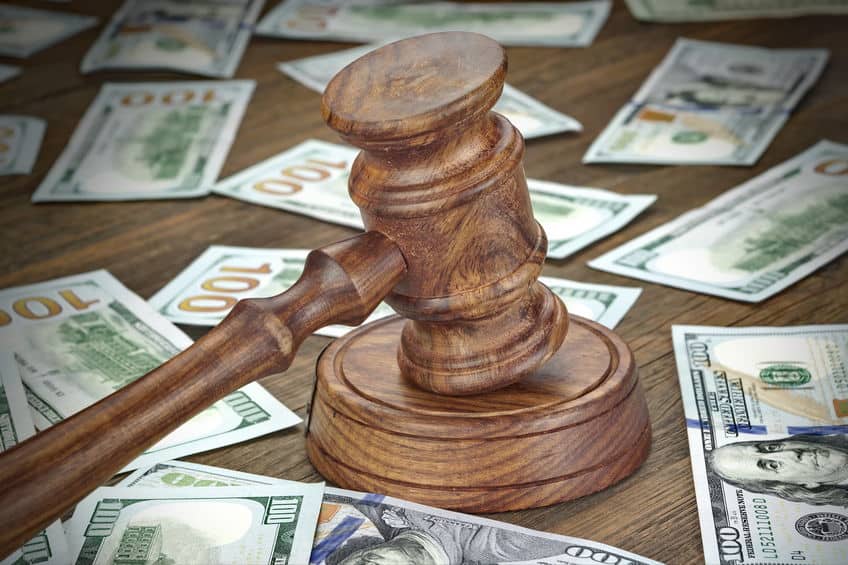
Laws Against Money Laundering
The work of the initiatives discussed earlier has resulted in stronger laws all around the world. As a global center for finance, the laws of the United States have proven to be very influential on other states. The Bank Secrecy Act (BSA) and anti-money laundering provisions of the Patriot Act represent some of the most influential in the world.
The Bank Secrecy Act of 1970 (BSA)
The BSA was one of the first major anti-money laundering (AML) laws in the US, and remains in force today.
In addition to applying heavy fines and criminal penalties for money laundering, the act steps ahead of launderers by requiring a significant amount of reporting. Those who fail to report can be prosecuted whether they’re involved in money laundering or not. This forces money launderers to commit prosecutable acts before they’ve even managed to set up their schemes.
The act requires 5 main types of reports.
- Currency Transaction Reports: CTRs are the reports that banks must file in the event of transactions that exceed $10,000 in one day. These reports are filed with the Financial Crimes Enforcement Network and include a significant amount of information that can be actioned quickly.
- Suspicious Activity Reports: SARs are the reports that banks must file when it appears that customers are attempting to work around CTRs. Banks may not inform customers when their behavior triggers the filing of a SAR.
- Foreign Bank Account Reports: FBARs must be filed by citizens who are keeping more than $10,000 in foreign bank accounts.
- Monetary Instrument Log: MILs must be filed by banks whenever customers purchase money orders, cashier’s checks or travelers checks between $3,000 and $10,000 in value. These logs must be maintained for several years and presented to investigators on request.
- Currency and Monetary Instrument Reports: CMIRs must be filed by banks or institutions that transport (by any means) certain monetary instruments such as currency and travelers checks.
The US is known around the world for applying particularly heavy fines against financial institutions that are involved in money laundering. Danske Bank, for example, is expected to pay far more in fines to the US than it will pay to its own home country, Denmark. Many of these fines come from the provisions of the BSA.
The BSA was recently amended as part of the USA PATRIOT ACT. The changes required banks and other financial institutions to establish their own comprehensive money laundering programs. Banks are obligated to create internal policies, assign permanent staff to monitor compliance and enforce the policies through training and audits.
Money Laundering Statistics
The FATF organization covered in the Anti-Money Laundering Initiatives Section takes a leadership role in gathering and publishing money laundering statistics. Their most-recently published figures provide a sobering look at how this crime affects the world economy.
As much as 1.5 trillion is laundered every year
While the true figures are impossible to generate, money laundering is believed to account for more than a trillion dollars every year. This is a trillion that is removed from local tax bases that are used for infrastructure upgrades and civil services.
Real Estate is Increasingly Popular in Money Laundering Schemes—30% of high-value all-cash real estate purchases in New York were conducted by individual under investigation
Not all laundering schemes pull money out of the economy, some just destabilize it through monopolization of real estate. Real estate is increasingly one of the preferred vehicles of money launderers.
The amount of money laundered through cryptocurrencies tripled between 2017 and 2018
Between the two previous years, cryptocurrency went from representing less than $200m of funds laundered to more than $700m. While this is a statistically small amount of all money laundered every year, the amount involved is already expected to double again in 2019.
Bottom Line
Laundered money accounts for a statistically significant amount of all money in the world economy. This makes the issue a serious one for all types of businesses, and particularly those businesses involved in the financial sector.
Understanding the way these schemes work, how they’ve played out in history and how both international and US laws are used against them can help anyone understand how to detect when their organization may be involved.

